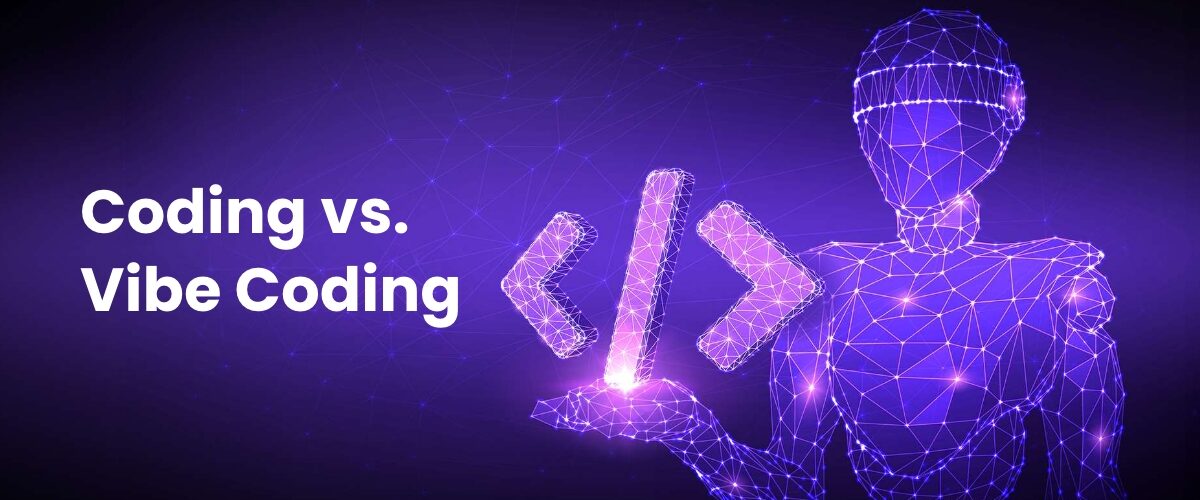By Hiran de Silva
Recently, Mark Proctor shared a post suggesting that “vibe coding” is little more than prompt bingo—type something in, cross your fingers, and hope the AI spits out something useful.
It’s a popular view. And it’s understandable if the prompts being used are vague, minimal, or phrased like casual Google searches.
But that’s not what vibe coding is.
Not even close.
Let’s demystify it.
✅ Vibe Coding Is a Discipline, Not a Lottery
Vibe coding is not about hoping for the best.
It is about thinking clearly, expressing clearly, and iterating deliberately.
To use AI effectively for technical solution-building—Excel automation, consolidation engines, reconciliation processes, database workflows—you need three things:
1. Clarity of intention
You must know what you actually want, not just the surface-level action.
2. Clarity of communication
You must express the requirement in precise, unambiguous terms that reflect the true problem, not the symptom.
3. A feedback loop
You refine, correct, adjust, and sharpen—just as a consultant and a client iterate a brief, or as a programmer iterates a spec.
This is how professionals work with AI.
This is how vibe coding works.
This is why it is not random.
And George Harrison captured it perfectly:
“If you don’t know where you’re going, any road will take you there.”
— Any Road, George Harrison
If you don’t know your destination, of course you’ll feel like you’re getting random outputs.
✅ Two Prompts, Two Worlds — Why the “Bingo” Happens
Let’s take one of Mark Proctor’s own examples: reconciling two lists.
If your prompt is:
“I have two lists I want to reconcile.”
You are effectively asking the AI:
“Show me a beginner tutorial.”
And naturally, you’ll receive a beginner tutorial—because that’s what you asked for.
Yes, the answer could be potluck—there are thousands of techniques and tutorials online.
This is exactly the level of vagueness that creates the illusion of “prompt bingo.”
Now contrast that with a professional prompt:
“My boss needs an automated solution to reconcile multiple lists against multiple lists every night, unattended. It must identify true reconciliation differences, exclude predictable timing differences, and deliver immediate notifications. The entire process must be driven from Excel.”
This is a completely different question.
And it triggers a completely different class of solution:
- event-driven reconciliation
- background automation
- scheduling
- delta detection logic
- exception isolation
- Excel-driven control panel
- ADO or database integration
- email or Teams notifications
- full enterprise workflow
The difference in outputs is not luck.
The difference is clarity.
When your intention is precise, the AI’s response becomes precise.
✅ The Real Issue: Too Many People Prompt as If They’re Googling
The frustration many people experience with generative AI comes from this habit:
They prompt the AI the way they type into Google.
Vibe coding requires the opposite mindset:
- You must articulate context.
- You must explain constraints.
- You must define success conditions.
- You must specify the environment.
- You must tell the AI what matters and what does not.
That is why vibe coding is a thinking skill, not a guessing game.
As every consultant knows:
If the brief is vague, the first solution will be wrong.
The quality of the answer is directly proportional to the quality of the question.
✅ This Is the Gap Between Popular Excel and Professional Excel
Popular Excel focuses on:
- narrow tricks
- feature demos
- formula acrobatics
Professional Excel focuses on:
- architecture
- workflows
- systems
- reliability
- automation
- scalability
- elimination of manual processes
AI responds to whichever world you prompt from.
A vague prompt yields popular Excel.
A precise prompt yields enterprise Excel.
✅ Why It Matters
A beginner who types “How do I reconcile two lists?” will get a lucky-dip of formulas and techniques.
A manager, engineer, or consultant who articulates a precise workflow need will get design-level guidance for an automated reconciliation system.
And this is the heart of vibe coding:
It is not about what the AI knows.
It is about what you know, and how clearly you express it.
When you know exactly what you want, the AI becomes a multiplier.
When you are unclear, the AI becomes a bingo machine.
✅ A More Useful Way to Frame Vibe Coding
Vibe coding is:
- Requirements analysis
- Systems thinking
- Communication
- Iteration
- Refinement
- Problem modelling
- Solution shaping
It is not magic.
It is not luck.
It is not bingo.
It is the same mental discipline required to brief developers, write specifications, design architecture, or direct consultants.
AI simply accelerates the loop.
✅ Conclusion
Mark’s point captures the beginner experience.
It’s true: if you prompt vaguely, you’ll get randomised results.
But that is not vibe coding.
That is not how professionals build solutions with AI.
And that is not how the new generation of Excel + AI developers will work.
When you:
- Know where you’re going,
- Explain the destination clearly, and
- Travel with an iterative feedback loop—
—AI becomes predictable, powerful, and astonishingly effective.
That is vibe coding.
And it is the opposite of bingo.
Related Articles
“Vibe coding” is a term for AI-assisted software development where a user describes their desired application in natural language, and an AI generates, refines, and debugs the code. Coined by Andrej Karpathy in early 2025, it shifts the focus from line-by-line coding to guiding an AI with high-level descriptions to build software, making app creation more accessible to those with little to no traditional programming experience. While it accelerates development and can be used for complex applications, it still requires clear prompting, and complex projects may benefit from expert oversight due to potential bugs.
Key aspects of vibe coding
- AI-driven generation: You provide a simple description like, “make me a program that schedules my weekly meals,” and the AI generates the code.
- Iterative process: Users can have a conversation with the AI, asking for changes, fixes, or new features until the application meets their needs.
- Accessible to non-coders: It lowers the barrier to entry for creating apps, allowing people to build products without learning traditional coding languages.
- Appeals to experienced developers: Even experienced engineers use it to build applications faster, sometimes reducing development time from months to days.
- Requires clear prompts: The effectiveness depends on how well the user can describe their vision, so clear and specific instructions are crucial for good results.
How it works
- Describe the goal: You state the desired functionality of the app in plain language.
- AI builds the code: The AI interprets your request and generates the code to build the application.
- Refine with feedback: You can give further instructions to the AI to refine the code, fix bugs, or add features.
- Tools: Software like Cursor or Windsurf can be used for this process, which can integrate with existing tools like VS Code.
Potential challenges
- Bugs: The generated code is not guaranteed to be perfect and may contain bugs.
- Scalability and security: For complex or high-stakes projects, partnering with experienced developers is advisable to ensure scalability and security.
- Precision vs. “vibes”: The term captures the idea of not needing to “forget the code exists” but it doesn’t replace the need for technical understanding for all tasks.






Add comment